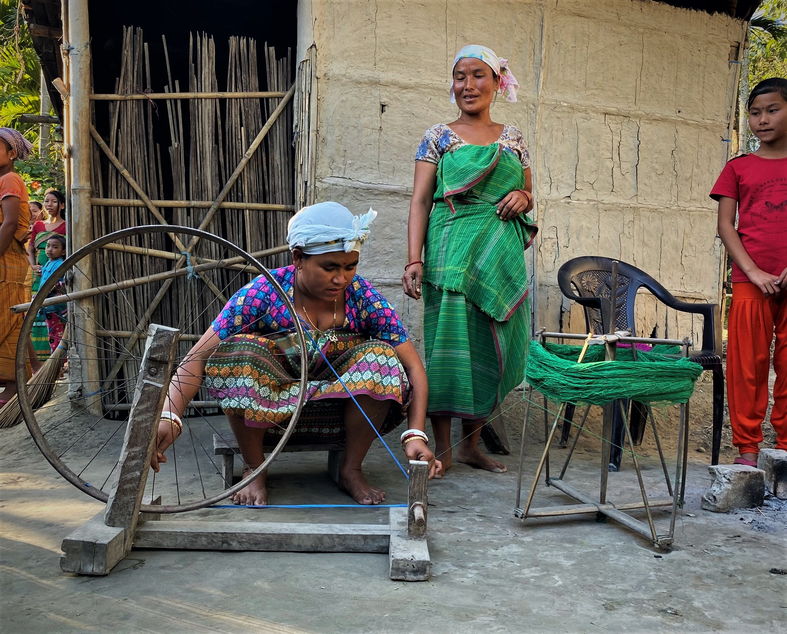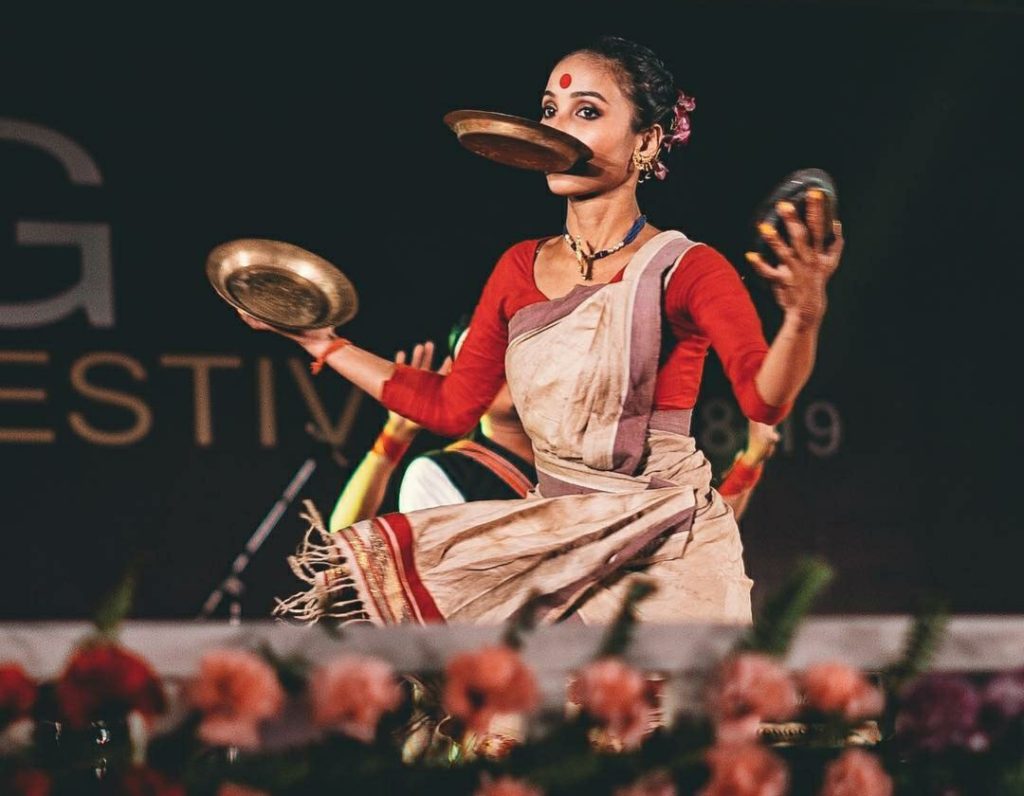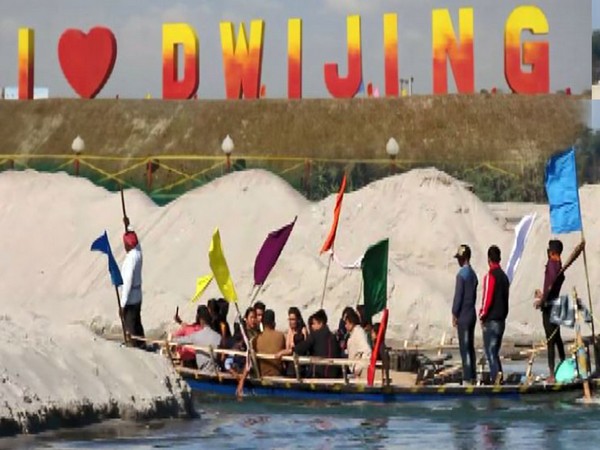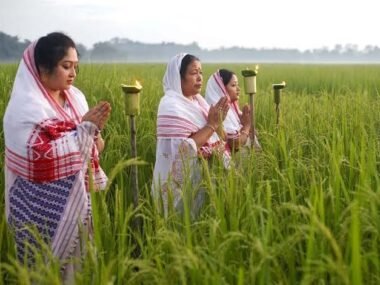Introduction
The Dwijing Festival, also known as the Aie River Festival, is an annual event that showcases the cultural heritage, traditions, and natural beauty of Assam’s Bodoland Territorial Region (BTR). Held on the banks of the Aie River near the Hagrama Bridge in Chirang district, this vibrant festival takes place from December 27 to January 7 each year. The event has gained popularity for its mix of cultural programs, adventure activities, and economic opportunities for locals.
Etymology and Significance
The word Dwijing originates from the Bodo language, where ‘dwi’ means water and ‘jing’ refers to the riverbank. The festival is celebrated along the Aie River, a significant water body in Assam, with the name ‘Aie’ meaning ‘mother’ in Bodo. This river plays a crucial role in the daily lives of the local people, serving as a source of livelihood, irrigation, and transportation.
History and Origin

The Dwijing Festival was first launched in 2016 as a joint initiative by the Assam Tourism Department, Assam Tourism Development Corporation, and Bodoland Tourism. The primary objective was to promote river tourism and highlight the unique culture, customs, and traditions of the Bodoland Territorial Region.
Over the years, the festival has grown in scale, attracting thousands of visitors from across India and abroad. The fourth and most recent edition was held from December 27, 2019, to January 7, 2020. However, due to the COVID-19 pandemic, the event faced disruptions, and subsequent editions have been modified or postponed.
Location and Setting
The Dwijing Festival is held near the Hagrama Bridge, which is the longest rural river bridge in Assam. This scenic location provides a perfect backdrop for the festivities, offering visitors breathtaking views of the river and the surrounding landscape. The serene environment combined with the colorful cultural displays makes it a unique tourist attraction in Northeast India.
Key Attractions of the Festival
The Dwijing Festival is more than just a cultural event; it is a grand celebration that includes numerous activities and attractions:
1. Cultural Performances
The festival serves as a platform for showcasing the traditional Bodo dance, music, and folk performances. Artists from different parts of Assam and India participate in the event, bringing together a fusion of diverse cultures.
2. Ethnic Trade Fair and Handicrafts Exhibition
One of the highlights of the festival is the ethnic trade fair, where local artisans and entrepreneurs showcase their traditional handicrafts, textiles, and bamboo products. This not only promotes indigenous art but also helps in sustaining local craftsmanship.
3. Traditional Cuisine and Food Stalls
Visitors get to indulge in a variety of Assamese and Bodo delicacies, such as silkworm fry, smoked pork, pitha (rice cakes), and apong (rice beer). The food stalls feature authentic flavors that represent the culinary heritage of the region.
4. Adventure Sports and Outdoor Activities
The festival offers thrilling activities for adventure lovers, including:
- River Rafting on the Aie River
- Paragliding
- Hot Air Balloon Rides
- Helicopter Rides for an aerial view of the festival site
- Zip Lining and Rock Climbing
5. Traditional Games and Sports

The festival also features traditional Bodo sports such as archery, wrestling, and boat racing, providing a glimpse into the recreational practices of the local community.
6. Bollywood and Musical Performances
Several Bollywood celebrities and renowned artists have graced the festival stage over the years, making it a star-studded event. Live concerts featuring regional and national artists create an electrifying atmosphere for visitors.
Economic and Social Impact
The Dwijing Festival plays a crucial role in boosting the local economy by generating employment opportunities and promoting tourism. It benefits local businesses, artisans, and food vendors by attracting thousands of visitors every year. Additionally, it encourages cultural exchange and fosters a sense of pride among the people of Bodoland.
The festival also aims to highlight the sustainable development of river tourism, emphasizing the conservation of the Aie River and its surroundings. By promoting eco-tourism, the event encourages responsible travel and environmental awareness among tourists.
Future Prospects and Growth
Given its increasing popularity, the Dwijing Festival is expected to expand in scale in the coming years. The Assam government and Bodoland authorities are working towards making the event an international attraction by enhancing infrastructure, increasing promotional efforts, and introducing new activities.
Conclusion
The Dwijing Festival is a remarkable celebration that brings together culture, adventure, and economic progress. It showcases the rich traditions of Bodoland while providing visitors with a diverse and engaging experience. With its vibrant cultural performances, exciting adventure activities, and significant economic impact, the festival is set to become one of India’s most sought-after winter tourism events.
For anyone looking to experience the beauty of Assam’s riverine culture, Dwijing Festival is a must-visit!
FAQ’s
Q. What is the Dwijing Festival?
The Dwijing Festival is an annual river festival celebrated on the banks of the Aie River in Chirang district, Assam, showcasing Bodoland’s culture, adventure sports, and local cuisine.
Q. When and where is the Dwijing Festival held?
The festival is held every year from December 27 to January 7 near the Hagrama Bridge on the Aie River in the Bodoland Territorial Region (BTR), Assam.
Q. What are the main attractions of the Dwijing Festival?
The festival features traditional Bodo dance and music, adventure sports (river rafting, paragliding, zip-lining), helicopter rides, food stalls, ethnic trade fairs, and Bollywood celebrity performances.
Q. How can I reach the Dwijing Festival?
The nearest airport is Lokpriya Gopinath Bordoloi International Airport (Guwahati), about 200 km away. Visitors can take buses, taxis, or trains to reach Chirang district from Guwahati.
Q. Is there an entry fee for the Dwijing Festival?
Entry to the festival grounds is usually free, but some adventure activities and special performances may require separate tickets.












